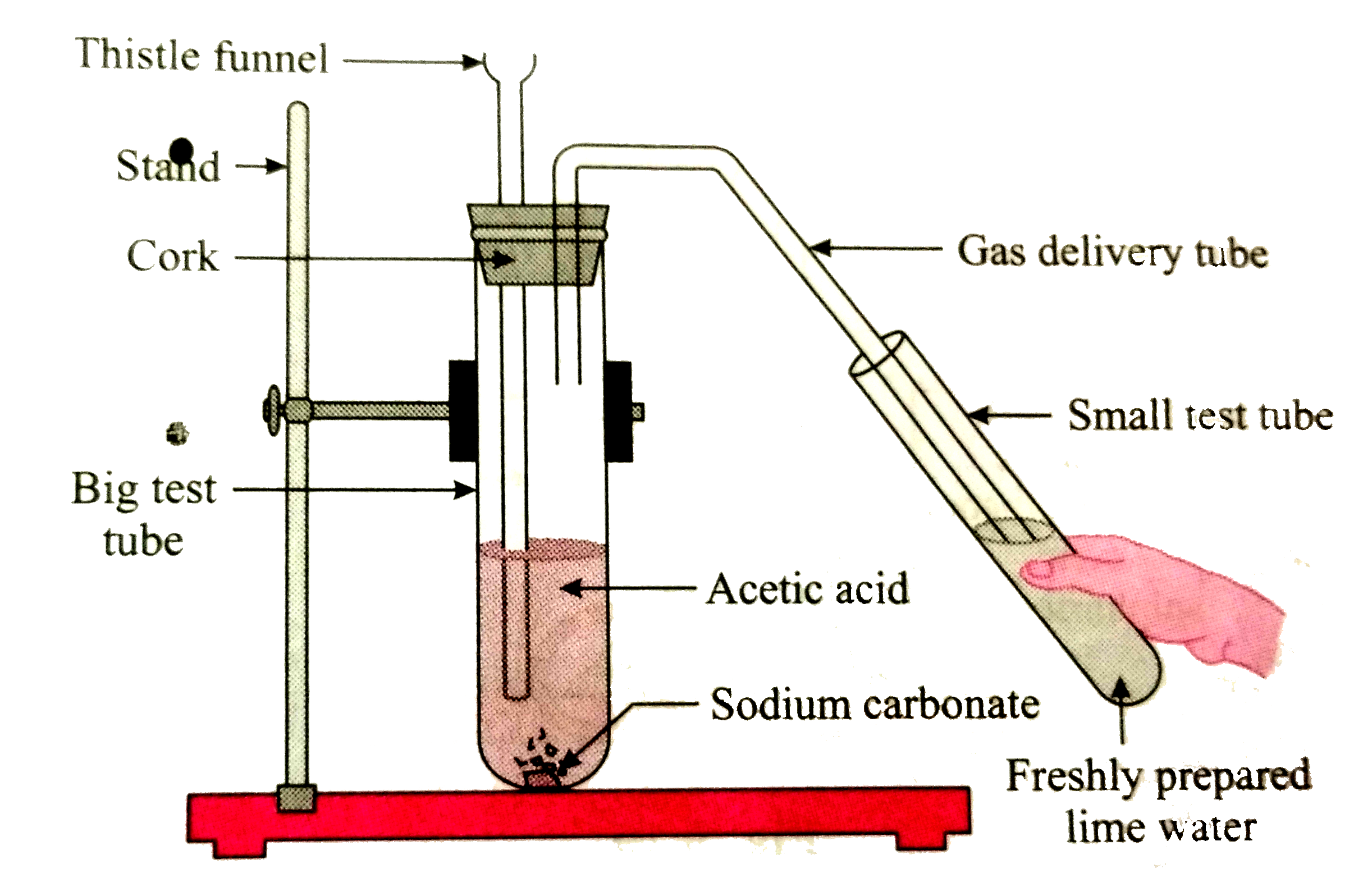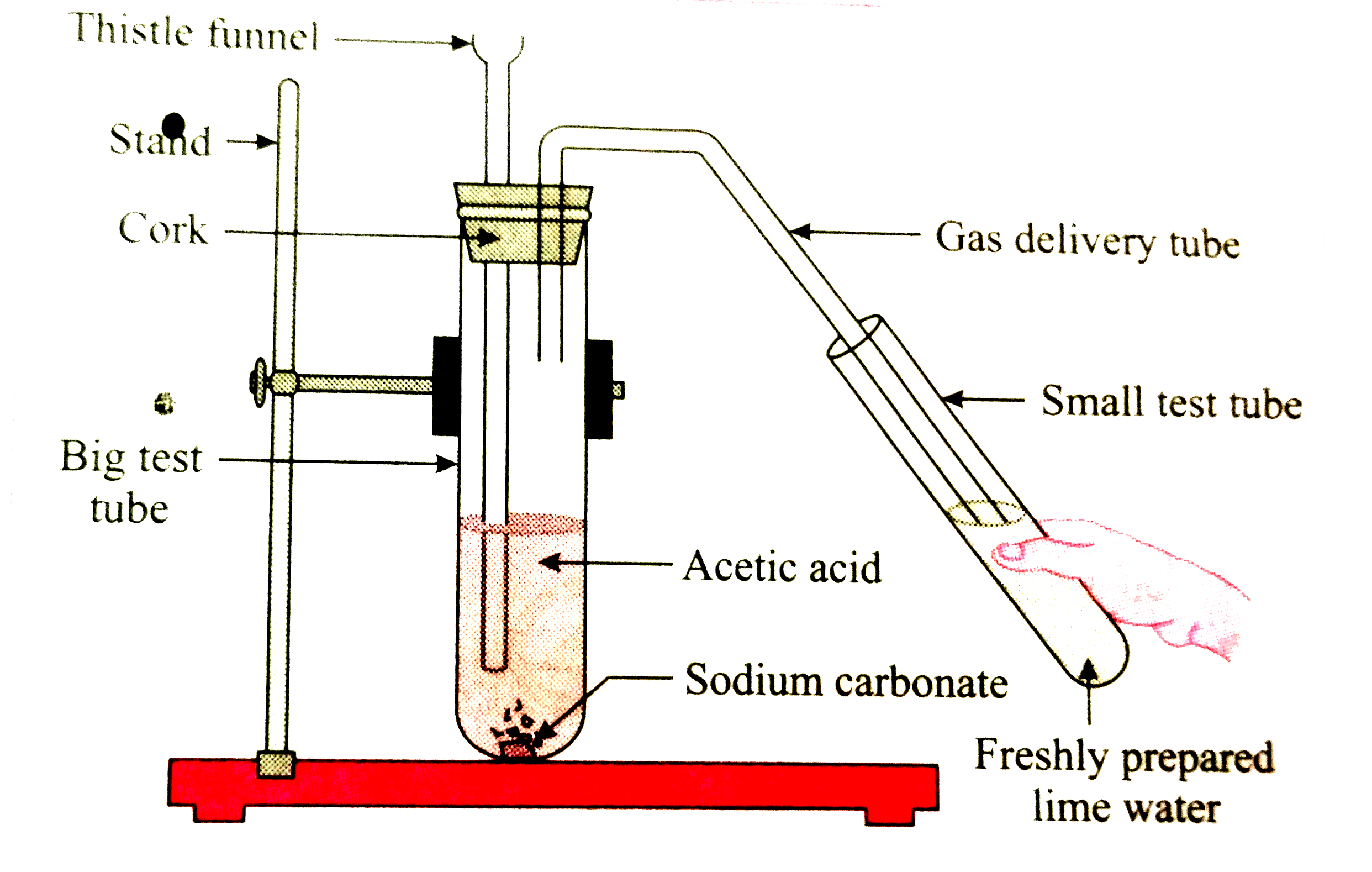Apparatus: Two test tubes, balance, measuring cylinder, etc.
Chemicals: Pieces of Shahabad tile, powder of Shahabad tile, dilute HCl, etc.
Procedure: Take pieces and powder of Shahabad tile in equal weights in two test tubes. Add 10 mL dilute HCl in each of the test tubes.
Observe whether effervescence of CO2 is formed at a faster or slower speedSolution in Marathi
The effervescence of CO2 is formed slowly with the pieces of Shahabad tile while at a faster speed with powder of Shahabad tile.
Inference: The rate of a chemical reaction depends upon the size of the reactant particles taking part in the reaction. Smaller the size of the reactant particles, higher is the rate of reaction.
Topper's Solved these Questions
- BOOK - TARGET PUBLICATIONCHAPTER - CHEMICAL REACTIONS AND EQUATIONSEXERCISE - Chapter Assessment31videos
CHEMICAL REACTIONS AND EQUATIONS
- BOOK - TARGET PUBLICATIONCHAPTER - CHEMICAL REACTIONS AND EQUATIONSEXERCISE - Questions based on paragraph20videos
CHEMICAL REACTIONS AND EQUATIONS
- BOOK - TARGET PUBLICATIONCHAPTER - CARBON COMPOUNDSEXERCISE - Chapter Assessment(Give scientific reasons.)3videos
CARBON COMPOUNDS
- BOOK - TARGET PUBLICATIONCHAPTER - METALLURGYEXERCISE - CHAPTER ASSESSMENT12videos
METALLURGY
Similar Questions
The chemical formula of the rust is
View SolutionVeena observes that during winter setting of milk into curd takes more time while during summer, the same process happens faster. She asks about this difference in time taken to her elder sister. She also asks her sister about why certain reactions occur rapidly while others occur slowly. Her sister explains her about the various factors that affect the rate of chemical reactions. Based on the above scenario, answer the following questions.
Why do you think setting of curd occur at different rates during different seasons?View SolutionState whether the following statements are true or false. If false then rewrite the correct statements: Carbon is tetravalent and it can undergo catenation.
View SolutionA student added zinc strip to a solution of CuSO4. After several minutes, he observed that the blue colour of solution changed and a layer got deposited on zinc strip. The colour of the solution and that of the coating would respectively be ______
02:25View SolutionIt takes time for pieces of Shahabad tile to disappear in HCI, but its powder disappears rapidly.
02:30View SolutionIt takes time for pieces of Shahabad tile to disappear in HCl, but its powder disappears rapidly.
06:32View SolutionIt takes time for pieces of shahabad tile to disapperar in HCl , but its powder disappears rapidlly .
View SolutionApparatus: Big test tube, small test tube, bent gas delivery tube, rubber cork, thistle funnel, stand, etc.
Chemical : Acetic acid, sodium carbonate power, freshly prepared lime water.
Procedure : Arrange the apparatus as shown in figure. Plance sodium carbonate powder in the big test tube. Pour 10 ml acetic acid through the thistle funnel. Observe the changes taking place in the two test tubes.

Which gas does come out as effervescence in the big test tube ?View SolutionApparatus: Big test tube, small test tube, bent gas delivery tube, rubber cork, thistle funnel, stand, etc.
Chemical : Acetic acid, sodium carbonate power, freshly prepared lime water.
Procedure : Arrange the apparatus as shown in figure. Plance sodium carbonate powder in the big test tube. Pour 10 ml acetic acid through the thistle funnel. Observe the changes taking place in the two test tubes.

Why are bubbles seen in the small test tube ?04:49View SolutionIt takes 24 hours to fill a swimming pool using two pipes. If the pipe of larger diameter is used for 8 hours and the pipe of the smaller diameter is used for 18 hours. Only half of the pool is filled. How long would each pipe take to fill the swimming pool.
View SolutionIt takes . time for pieces of Shahabad tile to· disappear in HCI, but its powder disappears rapidly.
View SolutionApparatus: Two test tubes, balance, measuring cylinder, etc. Chemicals: Pieces of Shahabad tile, powder of Shahabad tile, dilute HCl, etc. Procedure: Take pieces and powder of Shahabad tile in equal weights in two test tubes. Add 10 mL dilute HCl in each of the test tubes. Observe whether effervescence of CO_2 is formed at a faster or slower speed
04:49View SolutionApparatus: Big test tube, delivery tube fitted in a rubber cork, knife, candle, etc. Chemicals : Sodium metal, ethanol, magnesium ribbon, etc. Procedure : Take 10 mL ethanol in a big test tube. Cut Sodium metal into 2-3 pieces of a cereal grain size. Put the sodium pieces into the ethanol in the test tube and fix the gas delivery tube to the test tube. Take a burning candle near the outlet of the gas delivery tube and observe. Does magnesium metal react with ethanol?
View SolutionIt takes . time for pieces of Shahabad tile to· disappear in HCI, but its powder disappears rapidly.
01:06View SolutionApparatus: Two test tubes, balance, measuring cylinder, etc. Chemicals: Pieces of Shahabad tile, powder of Shahabad tile, dilute HCl, etc. Procedure: Take pieces and powder of Shahabad tile in equal weights in two test tubes. Add 10 mL dilute HCl in each of the test tubes. Observe whether effervescence of CO_2 is formed at a faster or slower speed
02:50View SolutionApparatus: Big test tube, delivery tube fitted in a rubber cork, knife, candle, etc.
Chemicals : Sodium metal, ethanol, magnesium ribbon, etc.
Procedure : Take 10 mL ethanol in a big test tube. Cut Sodium metal into 2-3 pieces of a cereal grain size. Put the sodium pieces into the ethanol in the test tube and fix the gas delivery tube to the test tube. Take a burning candle near the outlet of the gas delivery tube and observe.
Does magnesium metal react with ethanol?02:31View Solution

